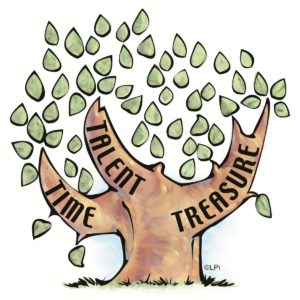Have you figured out what you want to have, or to be, when you reach the end of your personal run in this business life?
It is a fair question. Most of us work in our businesses, either as managers or owners, and rarely step outside to think about how this will end in a perfect world.
Investors call this discussion “exit planning” and of course they include themselves in the

Crossing you personal finish line…
discussion. But this is more personal, isn’t it? If you are relatively young, you probably think of this question as too distant to consider seriously. Of course, you’ll find another exciting venture and start again.
But for most of us, this question is or should be real and very personal. And obviously, the answer depends upon the circumstances of our lives, our age, and our health among other factors.
And the truth is that sometimes our business runs end badly, not with a crazy–large wire transfer or retirement bonus, but with a quick goodbye or a failed enterprise.
[Email readers, continue here…] But this question begs for a positive answer. How would you like to see your finish line? If you own a significant piece of the business, is this a time to consider planning an eventual exit or liquidity event? Or do you plan to pass control to the next generation if appropriate?
Considering the alternatives early in the timeline helps you to monitor growth in terms of valuation, weigh the value of continued investment, bring family members into the discussion, and picture the end game in your mind.
In this series of insights, we continue to examine issues related to all phases of business management, including a piece on “evergreen companies,” where your picture of success is one involving the next generation continuing your good work, and not a sale of the company. But where we have examined your management style and given insights for you in your business life, now we ask you to consider – even if just for a few minutes – that next or last stage.
Perhaps for the first time, this is a question to share with family. From considering retirement to plowing right back in to another run, family is deeply involved in this, and should be.
So here is my wish for you. Consider what you want in the end from your years of work, often years of sacrifice between business and family, with business often winning more of the time battles. And picture how this should finish. Make that picture vivid and actionable.
Then work toward, and enjoy someday crossing that finish line just the way you envisioned.

 couldn’t control the euphoria. A successful test. Completion of a software project by the remote workers in (Philippines, Brazil, Armenia, fill in the blank… Just name a country whose daytime is our nighttime.) You get the idea.
couldn’t control the euphoria. A successful test. Completion of a software project by the remote workers in (Philippines, Brazil, Armenia, fill in the blank… Just name a country whose daytime is our nighttime.) You get the idea. But there are wolves in the woods when it comes to entrepreneurial growth. Companies sometime run out of cash in the midst of success, and often find that sources of loans or investment are not freely flowing at the moment of need. Young companies have been known to outgrow the abilities of management to focus and direct them, failing to make the transition to organized, stable growth. Competitors, seeing a successful development of a niche, flock into the competitive void with products or services built with a fresh view of the current environment.
But there are wolves in the woods when it comes to entrepreneurial growth. Companies sometime run out of cash in the midst of success, and often find that sources of loans or investment are not freely flowing at the moment of need. Young companies have been known to outgrow the abilities of management to focus and direct them, failing to make the transition to organized, stable growth. Competitors, seeing a successful development of a niche, flock into the competitive void with products or services built with a fresh view of the current environment. some entrepreneurs and some CEOs, reasoning that the only harm in doing so is in taxes never paid to the IRS. The truth is that there is a much deeper degree of damage done to the moral and ethical fiber of the company itself, and certainly to the credibility of the executive or entrepreneur with employees.
some entrepreneurs and some CEOs, reasoning that the only harm in doing so is in taxes never paid to the IRS. The truth is that there is a much deeper degree of damage done to the moral and ethical fiber of the company itself, and certainly to the credibility of the executive or entrepreneur with employees. rest of the purchase price was concocted from a brew of zero coupon bonds (where the face value is many times the invested amount until the reduced cost bonds mature thirty years later), and borrowing using the target company’s accounts receivable and other assets as collateral for a loan to purchase the company.
rest of the purchase price was concocted from a brew of zero coupon bonds (where the face value is many times the invested amount until the reduced cost bonds mature thirty years later), and borrowing using the target company’s accounts receivable and other assets as collateral for a loan to purchase the company. And sometimes that’s all we end up doing. Call it a “press release partnership.” Or an opportunity missed. Or a relationship not nurtured.
And sometimes that’s all we end up doing. Call it a “press release partnership.” Or an opportunity missed. Or a relationship not nurtured. supplier teams, not just senior management. And according to his staff, the result is a cementing of relationships in which all members of the development team of the supplier feel a personal obligation to make efforts to meet the needs and satisfy not just the customer but the VP personally as well.
supplier teams, not just senior management. And according to his staff, the result is a cementing of relationships in which all members of the development team of the supplier feel a personal obligation to make efforts to meet the needs and satisfy not just the customer but the VP personally as well. obligate our personal and corporate assets for growth. Take, for instance, time. I’ve written often about the critical management of corporate time, an asset often squandered by management in inefficient operations that don’t advance the company toward the goal, or worse yet, operations that over–obligate scarce resources creating stress, cost and loss of reputation. “Corporate time” is quite different from individual time management. We should always be thinking of how to maximize the efficiency of our most critical resources constrained by limited time, whether they be in R&D, on the production floor, the chief software architect, or even you in management.
obligate our personal and corporate assets for growth. Take, for instance, time. I’ve written often about the critical management of corporate time, an asset often squandered by management in inefficient operations that don’t advance the company toward the goal, or worse yet, operations that over–obligate scarce resources creating stress, cost and loss of reputation. “Corporate time” is quite different from individual time management. We should always be thinking of how to maximize the efficiency of our most critical resources constrained by limited time, whether they be in R&D, on the production floor, the chief software architect, or even you in management. over 75% of their revenues from recurring sources. Management undertakes a simple exercise of calculating the increased profitability of shutting down all R&D, sales and subordinate operations, and universally notes with shock the high net profit that results – from shutting down all operations except customer service to recurring customers (as in software support operations.)
over 75% of their revenues from recurring sources. Management undertakes a simple exercise of calculating the increased profitability of shutting down all R&D, sales and subordinate operations, and universally notes with shock the high net profit that results – from shutting down all operations except customer service to recurring customers (as in software support operations.) depreciation and amortization), then the acquisition team should be able to create a way to make the resulting acquisition yield forty percent EBITDA after re–engineering the combined entity.
depreciation and amortization), then the acquisition team should be able to create a way to make the resulting acquisition yield forty percent EBITDA after re–engineering the combined entity.